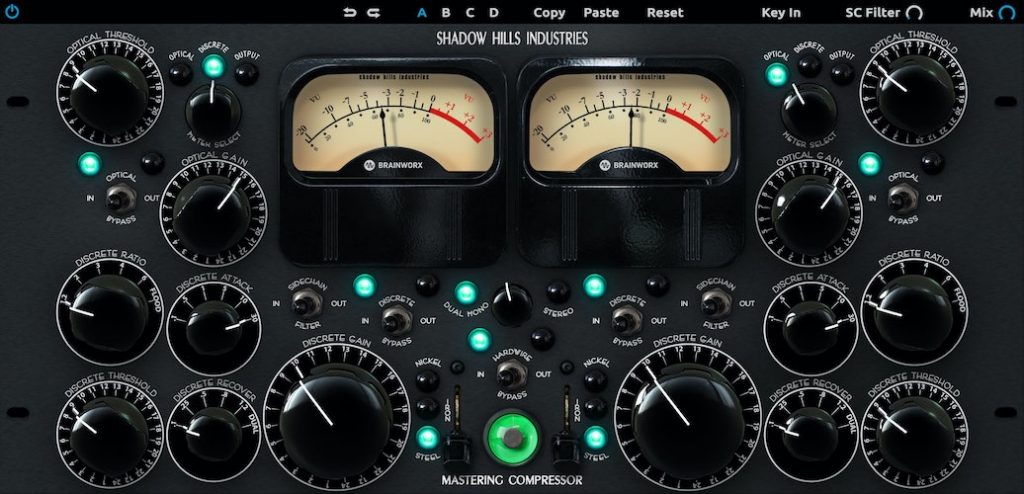
The Shadow Hills gear definitely has a visual aesthetic of it’s own. Always noticeable when in a rack, especially when alongside more vintage pieces, it’s got a kind of death star technology vibe going on. I’d be lying if I said I had tried the hardware counterpart of the Shadow Hills Mastering Compressor, but I have heard their GAMA mic pre in person.
Anyway, back to the mastering comp. It’s designed to be used on a master bus, as these things tend to be and is said to be extremely musical and versatile. Firstly, noticing it has both stereo optical and discrete processors on board, I can start to imagine the interesting combinations of tones you can coax with this thing.
On my first venture with the plug-in, it took me a minute to realise why the VU (Very Useless?) were not representing what I was doing. There is a switch to change the display to represent either the optical, discreet or output levels (duh). Once I had that sussed, things became a lot more fun!
The optical comp has that classic two knob control for threshold and gain parameters and works nicely for just running over the entire mix with the compressor just working at a few db of reduction. This sounded great on the different source material I tested it on (some ambient and some techno tracks) and had a noticeably pleasing curve to how the volume recovers from attenuation.
The discrete section takes a more ‘modern’ approach, with a greater degree of control over ratio, attack, recovery and gain. To be honest when it comes to using mastering plugins on my own tracks, I tend to lean towards using a light combination of simpler tools (like the optical comp section here) that sound good and gravitate toward dynamic processors with a greater degree of control on individual instrument tracks during the mixdown stage, but that’s just my personal preference.
What surprised me the most is the output transformer modelling, where you can choose between Nickle, Iron and Steel. To be honest, I had to look up what these referred to as I had no idea, but I could certainly hear the difference. On some ambient material, the Nickel setting worked really well and sounded really smooth and classy, but when I ran some more beat-orientated music through Nikel, I wasn’t so keen. The Iron and Steel settings seemed more chunky in this regard and imparted a bit more character, which suited the techno tracks I was testing very nicely!
Without the original to compare, I cant say how exactly this matches up as a digital clone. But as a master bus compressor, with a lot of character and a lovely interface, with little to distract you from the functionality, I would say this is a testament to both the original hardware design, as well as Brainworx’s ability to create a great sounding and attractive plugin. Kudos goes to the developers involved here.
The Shadow Hills Mastering Compressor is available now from plugin-alliance $299